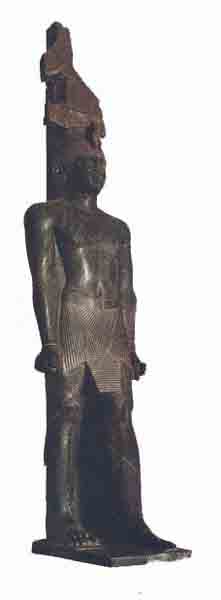Image Details

Courtesy of Derek Welsby
This statue depicts Pharaoh Tirhakah, ruler of Ethiopia (Biblical Cush) and Egypt, and ally of Hezekiah. In its description of the Assyrian siege, 2 Kings 19:9 records that Tirhakah “set out to fight against [the Assyrians].” Since Tirhakah only gained the throne in 690 B.C., he could not have been involved in the siege of 701 B.C., which is firmly dated in Assyrian annals. His appearance in the Biblical account helps to corroborate a second siege—occurring after 690 B.C. A recently translated Egyptian inscription states that some years before the Great Flood of the Nile (685/4 B.C.), Tirhakah waged a military campaign against an unnamed opponent: Could this be Sennacherib? If so, author Shea suggests, this would date the second siege to between 690 and 685 B.C.
